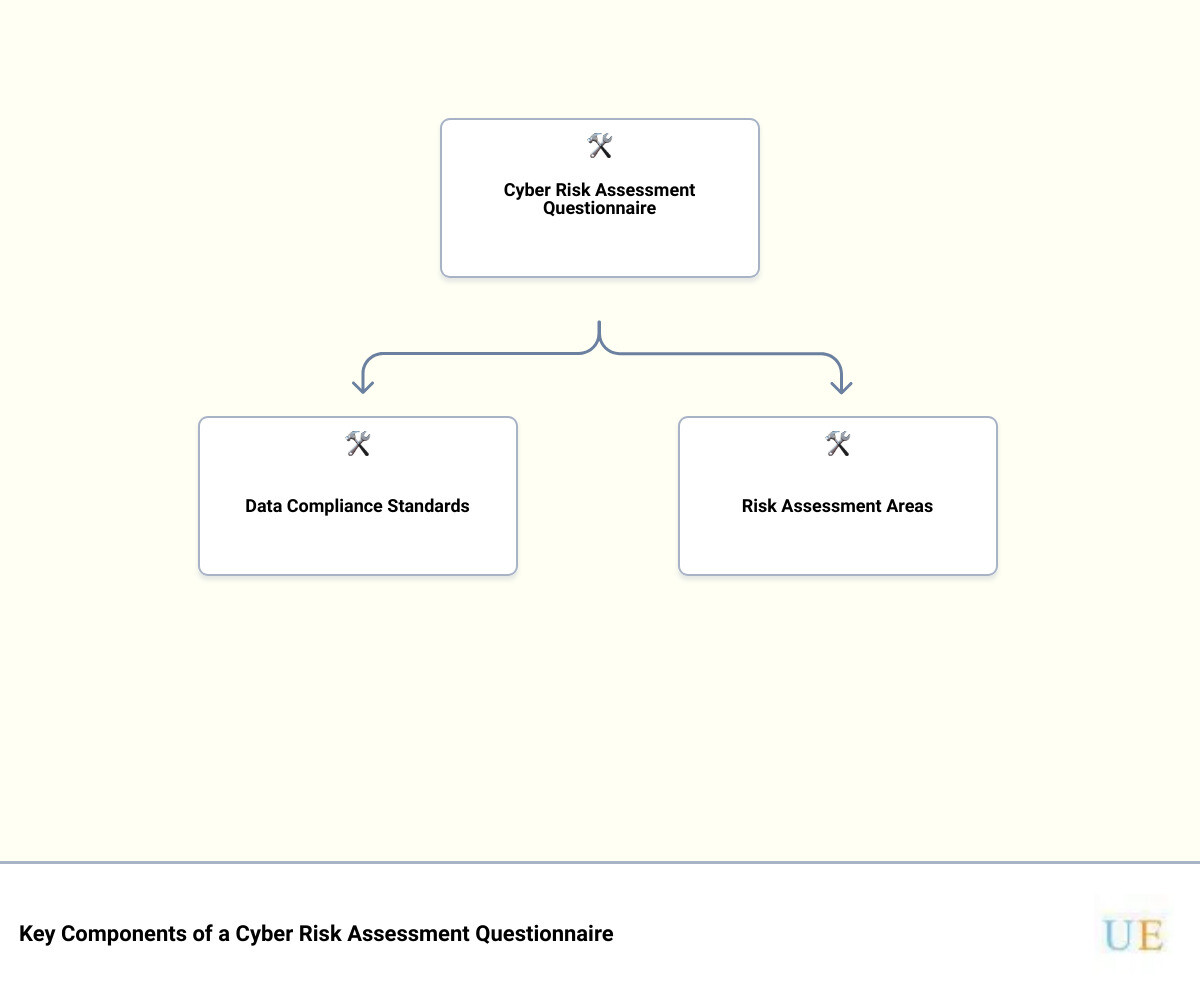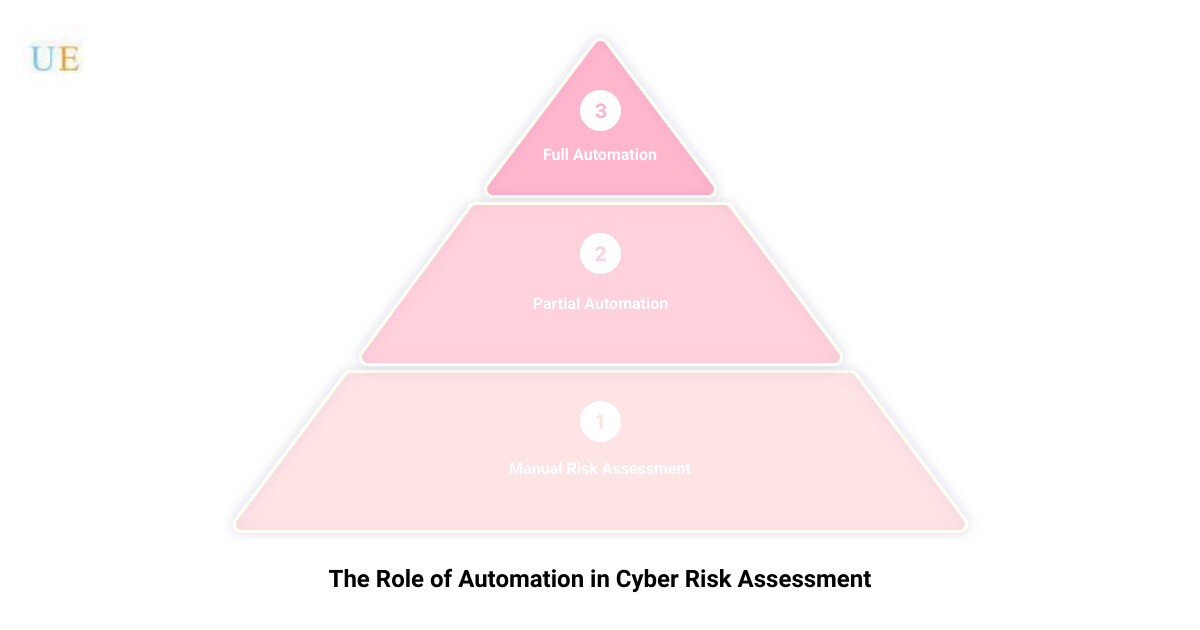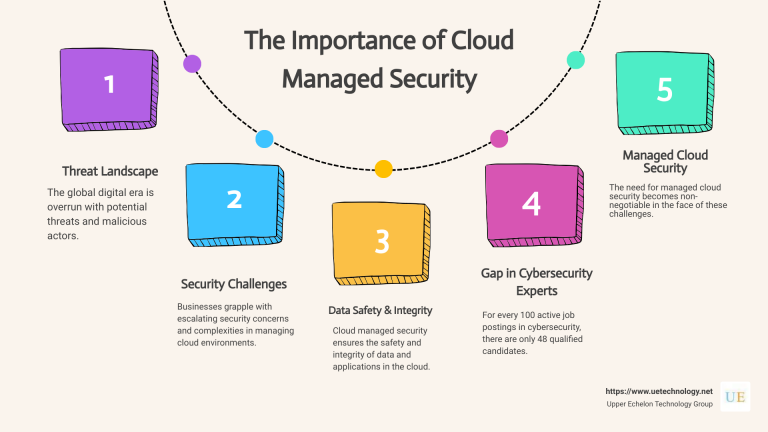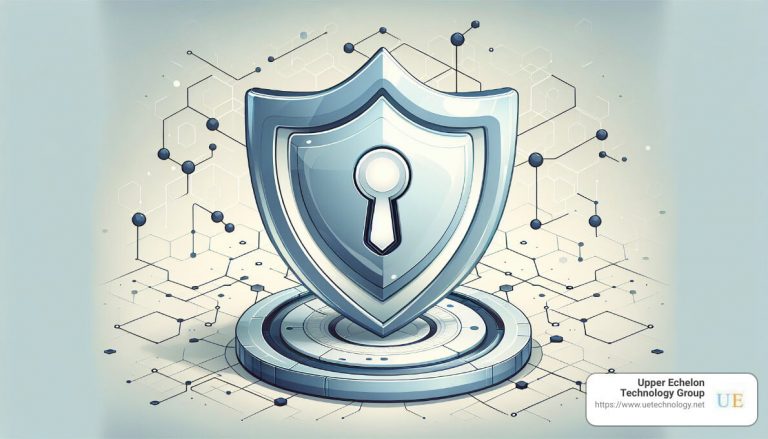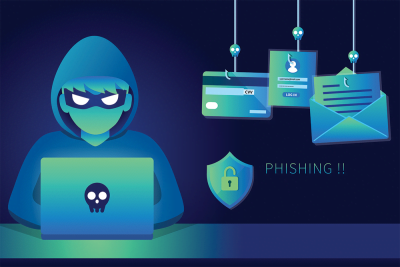In the fast-paced, interconnected digital world, cybersecurity threats have become increasingly prevalent. The critical need to protect your business from such threats has never been more urgent. Enter the Cyber Risk Assessment Questionnaire – an essential tool for identifying potential vulnerabilities and strengthening your cybersecurity posture.
A Cyber Risk Assessment Questionnaire is a vital component of a robust cybersecurity strategy. It allows businesses to identify and address potential security threats before they become a problem. For small to medium-sized business owners in Wilmington, DE, who are seeking a cybersecurity-focused managed services provider like Upper Echelon Technology Group, understanding the importance of this tool could be the difference between a secure future and a costly data breach.
The questionnaire plays a crucial role by uncovering hidden weaknesses, identifying security vulnerabilities, and helping businesses understand their risk exposure. It provides valuable insights into the potential risks that could affect a business’s assets, such as hardware, systems, customer data, and intellectual property.
However, understanding the importance of a Cyber Risk Assessment Questionnaire is just the beginning. In the subsequent sections, we’ll delve into what a Cyber Risk Assessment Questionnaire is, why it’s essential, and how to create a robust one for your business. Stay tuned, as we unveil the hidden secrets behind the Cyber Risk Assessment Questionnaire and how it can fortify your business’s defense against cyber threats.
Understanding the Cyber Risk Assessment Questionnaire
Embarking on the journey of cybersecurity, one of the most crucial tools in your arsenal is the Cyber Risk Assessment Questionnaire. But what exactly is it, and why is it so essential?
What is a Cyber Risk Assessment Questionnaire?
A Cyber Risk Assessment Questionnaire is a comprehensive tool employed by businesses to evaluate their cybersecurity posture. It includes a series of detailed questions designed to probe and identify any potential vulnerabilities or threats within a company’s IT infrastructure. These questions cover a broad spectrum of areas, ranging from hardware and software systems to customer data and intellectual property.
The questionnaire is not a one-size-fits-all tool; it’s often tailored to match the specific needs and risk profiles of different businesses. It’s a practical approach to assess risks, focusing on the company’s information assets that could be affected by a cyber attack.
Why is a Cyber Risk Assessment Questionnaire Essential?
In today’s digital world, where cyber threats are increasingly sophisticated and relentless, a Cyber Risk Assessment Questionnaire serves as an invaluable shield. Here’s why it’s essential:
-
Identifies Vulnerabilities and Threats: The questionnaire helps businesses to identify and understand their cybersecurity vulnerabilities, laying the groundwork for effective threat management.
-
Enhances Data Protection: With cyber attacks posing a constant threat to hardware, systems, and data, the questionnaire helps businesses safeguard their critical information assets.
-
Ensures Compliance: Many industries are subject to stringent data protection and privacy regulations. The questionnaire aids businesses in maintaining compliance with these regulations, avoiding potential legal complications and financial penalties.
-
Strengthens Vendor Management: When outsourcing services, businesses need to ensure that their vendors adhere to stringent cybersecurity standards. Security questionnaires are considered an industry best practice for assessing the security posture of vendor partners.
-
Facilitates Proactive Cybersecurity: The questionnaire allows businesses to proactively address cybersecurity risks, aligning their IT strategies with their business objectives and risk appetite.
In the complex and evolving landscape of cybersecurity, a Cyber Risk Assessment Questionnaire is an indispensable tool, allowing businesses to stay one step ahead of potential cyber threats. As such, a well-structured questionnaire is a vital component of any robust cybersecurity strategy.
The Anatomy of a Cyber Risk Assessment Questionnaire
Diving into the world of cybersecurity and risk assessment, it’s essential to understand what makes a Cyber Risk Assessment Questionnaire truly effective. Structuring a questionnaire that covers every possible threat vector is no easy task, but a well-crafted one can successfully reveal the hidden weaknesses in your cybersecurity defenses.
Key Components of a Cyber Risk Assessment Questionnaire
An effectively designed Cyber Risk Assessment Questionnaire should be comprehensive and cover a wide range of areas to thoroughly assess your organization’s security posture. Here are the key components it should include:
-
Identification of Assets: The questionnaire should begin by identifying the information assets that could be affected by a cyber attack. This could include hardware, systems, laptops, customer data, and intellectual property.
-
Threats and Vulnerabilities: This section should define cybersecurity threats and identify security vulnerabilities. It should assess the likelihood and potential impact of these threats.
-
Security Controls: This part of the questionnaire should outline the current security measures in place to protect against the identified threats and vulnerabilities.
-
Risk Analysis: This section should determine the level of risk each threat poses to your organization.
-
Monitoring and Review: The final component should include how often your organization monitors and reviews the effectiveness of its security measures.
Understanding Data Compliance Standards: SIG, CAIQ, and NIST
In addition to the basic components, a robust Cyber Risk Assessment Questionnaire should also align with established data compliance standards. These standards provide a guideline for organizations to ensure that their security measures are up to par.
-
SIG (Standardized Information Gathering): A prepared security questionnaire for third parties, SIG indexes several important regulations and control frameworks for your vendors. It helps businesses standardize their risk assessment processes.
-
CAIQ (Consensus Assessments Initiative Questionnaire): Provided by the Cloud Security Alliance (CSA), CAIQ aims to help organizations using cloud services assess the security capabilities of cloud service providers and SaaS companies. It’s a useful tool for assessing third-party cloud providers.
-
NIST (National Institute of Standards and Technology): NIST is a U.S. Department of Commerce agency that provides a cybersecurity framework for understanding, managing, and reducing cybersecurity risks. Following NIST guidelines can ensure your security measures are comprehensive and thorough.
Understanding these standards and incorporating them into your Cyber Risk Assessment Questionnaire ensures that your organization’s cybersecurity measures align with recognized best practices, helping you to maintain robust security defenses. In the next section, we’ll delve into how you can create a robust Cyber Risk Assessment Questionnaire.
Creating a Robust Cyber Risk Assessment Questionnaire
Unveiling the hidden weaknesses in your cybersecurity is not a task for the faint-hearted. It requires a meticulous and systematic approach. Foremost among your tools is the Cyber Risk Assessment Questionnaire. This powerful instrument can help you dig deep into the cyber risk landscape, uncovering potential vulnerabilities that could expose your business to data breaches and other security incidents.
Building from Scratch vs. Using Industry Standards and Templates
While it’s possible to create a Cyber Risk Assessment Questionnaire from scratch, it’s a labor-intensive and time-consuming process. You need to have a comprehensive understanding of cybersecurity principles and the specific risks your organization faces. If you’re a startup or a small business without a dedicated IT team, this could be a daunting task.
An efficient alternative is to leverage industry standards and templates. Compliance standards such as SIG, CAIQ, and NIST provide a solid foundation for your questionnaire. They cover a broad range of security aspects and can be customized to fit your specific needs. This way, you’ll be sure to cover all bases without having to start from ground zero.
Moreover, companies like HyperComply offer free questionnaire templates that have been specifically designed for risk assessment purposes. Utilizing these resources can save you a great deal of time and ensure that your questionnaire is comprehensive and up-to-date with the latest cybersecurity trends.
40 Example Questions for a Comprehensive Cyber Risk Assessment Questionnaire
To give you a head start, here are 40 example questions that can form the backbone of your Cyber Risk Assessment Questionnaire. Remember, the goal is not just to uncover vulnerabilities, but also to understand how your vendors and partners are handling their cybersecurity responsibilities.
- What are your data protection policies and procedures?
- How do you manage access control?
- What are your incident response plans?
- How regularly do you conduct security audits?
- How do you handle data encryption and secure transmission?
- What are your employee training programs on cybersecurity?
- How do you manage system updates and patches?
- How do you handle data backups and recovery?
- What steps do you take to ensure physical security?
- How do you manage network security?
(Continue with 30 more questions that cover areas such as mobile security, application security, third-party relationships, compliance with data protection laws, and security governance.)
Creating a robust Cyber Risk Assessment Questionnaire is a critical step in your cybersecurity journey. It’s not a one-time exercise but a continuous process that needs to be revisited and updated as your business evolves and as new threats emerge. With the right questions and a systematic approach, you can uncover hidden weaknesses and fortify your defenses against cyber threats.
Automating the Cyber Risk Assessment Process
After understanding the crucial role of cyber risk assessment questionnaires and how to create them, we now move into the realm of automation and how it can streamline vendor risk management. Automation not only simplifies the process but also ensures consistency and accuracy, thereby enhancing the effectiveness of your cybersecurity strategy.
The Role of Automation in Streamlining Vendor Risk Management
Gone are the days when cybersecurity teams had to manually sift through mountains of data and risk reports. Automation has revolutionized vendor risk management, making it more efficient and less time-consuming. It can help in automating the distribution of questionnaires, tracking responses, and analyzing the data to identify potential risks.
For instance, if you are working with multiple third-party vendors, tracking their compliance with your cybersecurity policies can be a daunting task. An automated process can make it easy to monitor their adherence to these policies and alert you to any potential breaches or non-compliance incidents. Thus, automation allows you to stay proactive and responsive in the face of evolving cyber threats.
The Benefits of Using a Risk Assessment Management Tool
Now, you might be wondering: why should I use a risk assessment management tool? These tools bring several benefits to the table. They can help in standardizing the assessment process, providing a clear framework for evaluating vendor risks. This standardization can lead to more accurate and comparable results, making your risk assessment process more reliable.
Secondly, these tools ensure consistency. They allow you to apply the same set of standards across all vendors, ensuring a consistent approach to risk assessment. This consistency can enhance the fairness and credibility of your risk assessments.
Thirdly, risk assessment tools can save you valuable time. They can automate several elements of the risk assessment process, from data collection to report generation. This can free up your IT team to focus on more strategic tasks, such as developing new cybersecurity initiatives or responding to urgent threats.
Lastly, these tools can improve your visibility into vendor risks. They can provide real-time insights into the cybersecurity posture of your vendors, enabling you to identify potential vulnerabilities and take proactive measures to address them.
In conclusion, automation is a powerful ally in your cybersecurity strategy. It can streamline your vendor risk management process, making it more efficient, reliable, and effective. In the next section, we will explore how to complement your cyber risk assessment questionnaire with continuous monitoring.
Complementing the Questionnaire with Continuous Monitoring
After automating your vendor risk management process, the next crucial step is to complement your cyber risk assessment questionnaire with continuous monitoring. This is a strategic approach that empowers businesses to always stay one step ahead of potential cyber threats.
The Limitations of a Cyber Risk Assessment Questionnaire
While cyber risk assessment questionnaires are invaluable tools for evaluating vendor security postures, like all tools, they have their limitations. The main limitation lies in the fact that these questionnaires offer a snapshot of your vendor’s cybersecurity posture at a specific point in time. Technology changes, business processes are outsourced, and policies are updated, renewed, and discarded. Therefore, the security risk presented by your digital supply chain is in constant flux.
Furthermore, security questionnaires are self-assessments, meaning you are relying on what vendors tell you about their security controls. Without a constant review and follow-up, it’s challenging to verify the claims vendors make about their security standards.
The Importance of Security Ratings in Vendor Risk Management
To mitigate these limitations, it’s crucial to complement your risk assessment questionnaire with security ratings. Security ratings are a data-driven, objective, and dynamic measurement of an organization’s security performance. By continuously monitoring each vendor’s level of risk, you can have a more comprehensive and real-time understanding of your vendor’s cybersecurity posture.
Real-time Third-Party Security Posture Monitoring: A Necessary Supplement
In addition to security ratings, real-time third-party security posture monitoring is a necessary supplement to your risk assessment questionnaire. This practice involves continuously observing and evaluating the security measures of your vendors, providing you with up-to-date information about potential vulnerabilities and breaches.
With real-time third-party security posture monitoring, you can identify cybersecurity threats as they emerge, allowing you to take swift action to mitigate risks. This dynamic approach not only keeps you informed about the current security status of your vendors but also gives you the data you need to make informed decisions about managing cybersecurity risks.
Effective cybersecurity is not a one-and-done process; it requires continuous monitoring and adjustment. By combining a thorough cyber risk assessment questionnaire with security ratings and real-time third-party security posture monitoring, you can create a robust, dynamic, and effective cybersecurity strategy that keeps your business protected. In the next section, we will explore how Upper Echelon Technology Group implements these practices to offer personalized IT managed services.
Case Study: Upper Echelon Technology Group’s Approach to Cyber Risk Assessment
In the fast-paced and constantly evolving world of cybersecurity, many companies struggle to keep up with the demands of protecting their most valuable assets. Enter Upper Echelon Technology Group, a cybersecurity-focused managed services provider that offers a unique and personalized approach to IT Managed Services.
Personalized IT Managed Services: A Unique Approach to Cybersecurity
When it comes to cybersecurity, Upper Echelon Technology Group goes beyond just “fixing tech issues”. They understand that each business is unique, with its own set of challenges and needs. For this reason, their approach is threefold:
- Resolve Technology Issues: They work diligently to solve your technology issues, creating a smooth and efficient IT environment for your business.
- Enhance Team Efficiency: By leveraging technology, they help make your team more efficient and productive.
- Boost Profitability: They identify areas where technology can improve your bottom line, making your company more profitable.
This personalized approach ensures that every aspect of your business benefits from their services, from your employees to your bottom line.
How Upper Echelon Technology Group Utilizes Cyber Risk Assessment Questionnaires
In addition to their unique approach to managed services, Upper Echelon Technology Group also utilizes cyber risk assessment questionnaires to help identify potential vulnerabilities within your organization.
The cyber risk assessment questionnaire is a crucial tool in their cybersecurity arsenal. It allows them to identify your organization’s most critical assets, understand how you prioritize them, and determine how they are protected. The questionnaire also probes into your organization’s past experiences with cybersecurity incidents, providing invaluable insights into potential weaknesses and areas for improvement.
Upper Echelon Technology Group doesn’t just stop at asking questions. They delve into the answers, analyzing your responses to assess the security of your software, the effectiveness of your security controls and technology, and your preparedness for a cybersecurity incident.
Furthermore, they also assess the security of your third-party service providers, understanding that vendors can often be a weak link in an organization’s cybersecurity chain. They’re interested in who these service providers are, what they do, and what kind of access they have to your IT systems.
In a nutshell, Upper Echelon Technology Group’s use of cyber risk assessment questionnaires enables them to deliver a comprehensive, 360-degree view of your cybersecurity landscape. This, coupled with their personalized approach and commitment to leveraging technology for business growth, makes them a leading choice for businesses seeking robust and effective cybersecurity solutions.
Conclusion: The Future of Cyber Risk Assessment Questionnaires
As we catapult further into the digital age, the importance of robust cybersecurity measures becomes even more pronounced. One such measure that’s gaining traction is the cyber risk assessment questionnaire. This tool is not just a passing trend; it is set to become a staple in every IT manager’s toolbox.
Cyber risk assessment questionnaires offer a unique way to uncover hidden vulnerabilities within your organization’s cybersecurity framework. They enable businesses to dive deep into the depths of their cyber security posture, revealing areas of potential concern that may have been overlooked. This, in turn, allows for a proactive approach to cybersecurity, where potential issues are addressed before they become critical.
However, as with any tool, the effectiveness of a cyber risk assessment questionnaire is only as good as its application. The future will likely see these questionnaires evolving, becoming more sophisticated and comprehensive. Expect advancements in automation and integration with other IT management tools to streamline the process further.
Upper Echelon Technology Group exemplifies the future of cyber risk assessment questionnaires. With their personalized approach to IT managed services, they utilize these questionnaires as a foundational tool in their cybersecurity arsenal. This approach helps them deliver a comprehensive overview of your cybersecurity landscape, identifying vulnerabilities, and taking prompt action.
In summary, cyber risk assessment questionnaires are more than just a handy tool – they are a pivotal part of any effective cybersecurity strategy. As technology continues to evolve, so too will these questionnaires, ensuring they remain relevant in the ever-changing landscape of cybersecurity threats and solutions. Stay ahead of the curve, embrace these tools, and secure your business’s future.


